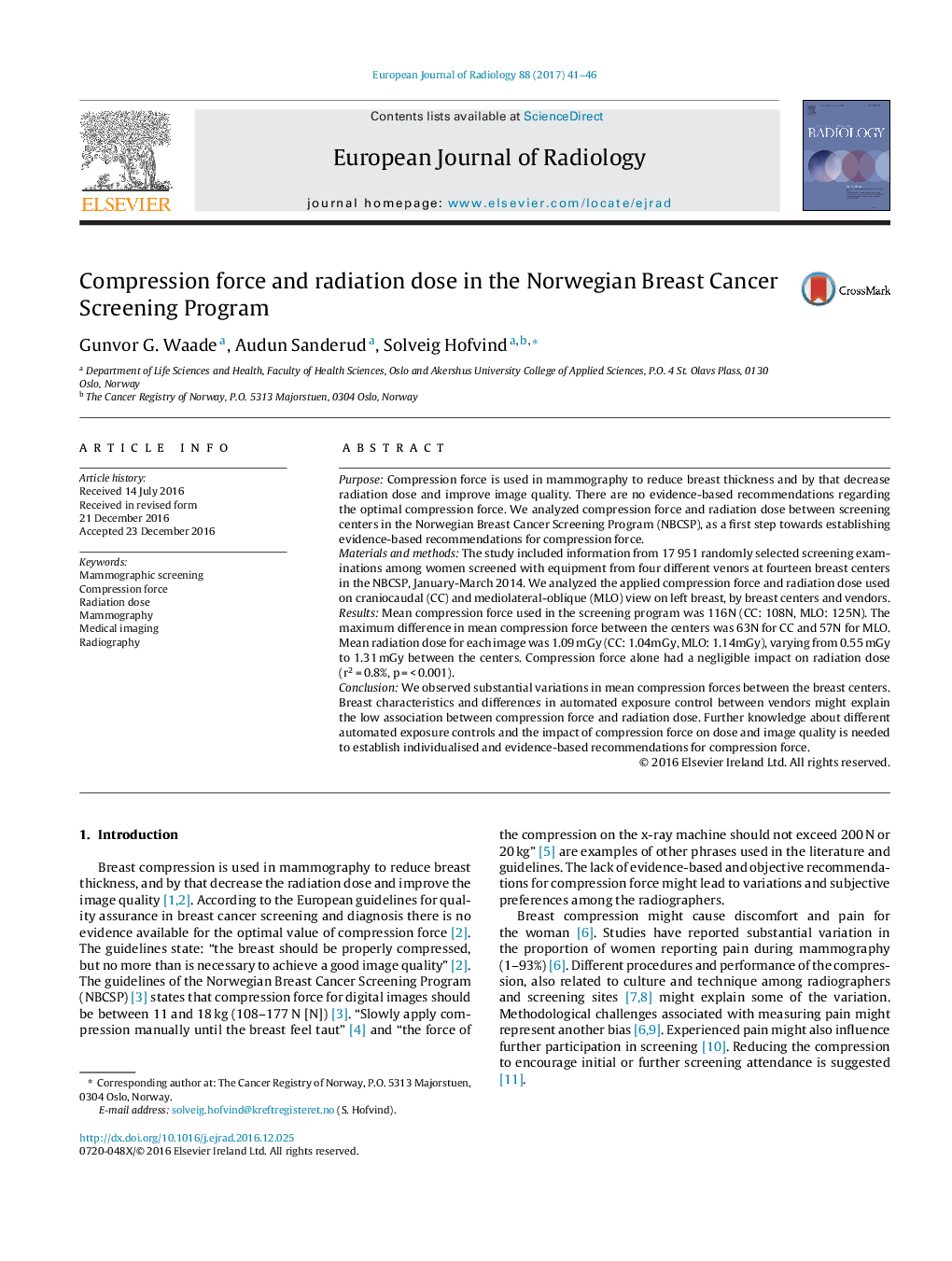| کد مقاله | کد نشریه | سال انتشار | مقاله انگلیسی | نسخه تمام متن |
|---|---|---|---|---|
| 5726221 | 1609732 | 2017 | 6 صفحه PDF | دانلود رایگان |
- Compression force and radiation dose for 17 951 screening mammograms were analyzed.
- Large variations in mean applied compression force between the breast centers.
- Limited associations between compression force and radiation dose.
PurposeCompression force is used in mammography to reduce breast thickness and by that decrease radiation dose and improve image quality. There are no evidence-based recommendations regarding the optimal compression force. We analyzed compression force and radiation dose between screening centers in the Norwegian Breast Cancer Screening Program (NBCSP), as a first step towards establishing evidence-based recommendations for compression force.Materials and methodsThe study included information from 17 951 randomly selected screening examinations among women screened with equipment from four different venors at fourteen breast centers in the NBCSP, January-March 2014. We analyzed the applied compression force and radiation dose used on craniocaudal (CC) and mediolateral-oblique (MLO) view on left breast, by breast centers and vendors.ResultsMean compression force used in the screening program was 116N (CC: 108N, MLO: 125N). The maximum difference in mean compression force between the centers was 63N for CC and 57N for MLO. Mean radiation dose for each image was 1.09 mGy (CC: 1.04mGy, MLO: 1.14mGy), varying from 0.55 mGy to 1.31 mGy between the centers. Compression force alone had a negligible impact on radiation dose (r2 = 0.8%, p = < 0.001).ConclusionWe observed substantial variations in mean compression forces between the breast centers. Breast characteristics and differences in automated exposure control between vendors might explain the low association between compression force and radiation dose. Further knowledge about different automated exposure controls and the impact of compression force on dose and image quality is needed to establish individualised and evidence-based recommendations for compression force.
Journal: European Journal of Radiology - Volume 88, March 2017, Pages 41-46
